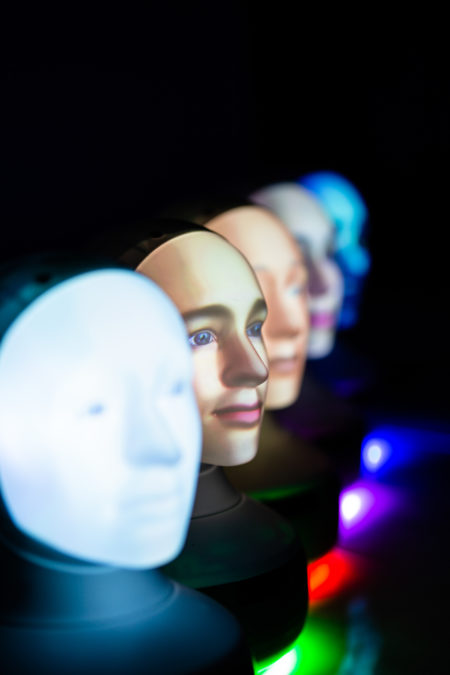What sets the social robotics platform aside from other robots in the world today “is the face”, says Furhat Robotics, which it claims uses “computer animation to create incredibly immersive characters and experiences.”
Furhat says that the social robotics platform can communicate with humans the way we do with each other — at least some of us — by speaking, listening, showing emotions and having conversations.
Apparently, it has been specifically designed to create an intuitive, humanlike and engaging experience making the way that people interact with technology much more natural.
The company has also developed a powerful and sophisticated platform specifically for multisensory and immersive language interactions, enabling developers, working in any industry sector and from any country, to build highly advanced applications for social robots.
The next disruption: pervasive voice-first at work
In the future workplace, you’ll use voice commands to tap into the machine learning capabilities of your company’s intranet
It says that 70 international brands including Disney, Merck and Honda are already working with Furhat, but that this new platform takes the concept of conversational AI to the next level. It claims that the social robotics platform will create new social and business opportunities and accelerate the development process.
It’s an impressive advancement and for those of us who watch this space, an exciting move forward.
But are humans ready to accept life-like robots? According to a study carried out by Kumar Yogeeswaran et al, humans might well perceive very humanlike robots as a realistic threat to human jobs, safety, and resources, as well as a threat to human identity and uniqueness, especially if such robots also outperform humans.
However, the study only suggested that such life-like robots were seen as a threat if the social robotics technology can outperform humans in physical and mental tasks.
How AI activated voice search is changing search strategies for businesses
On the other hand, a study published in Jamda, investigating how robots could support people feeling lonely, found that residents of a rest home who interacted with a robot in the form of a seal, saw a positive benefit.
Maybe the fundamental problem is fear of the unknown and once conversational AI and social robotics becomes more common, people’s fears and concerns will dissipate.
Returning to Furhat, Said Samer Al Moubayed, the company’s CEO said: “This is the culmination of many years of dedicated research and development both internally and through working with industry and technology partners. From its beginnings we have taken Furhat to a point where social robots are no longer a hope for the future but a reality of today”.
Voice recognition: has AI just beaten a human?







